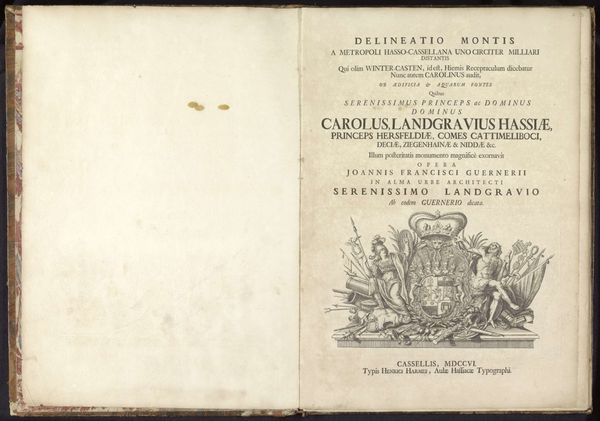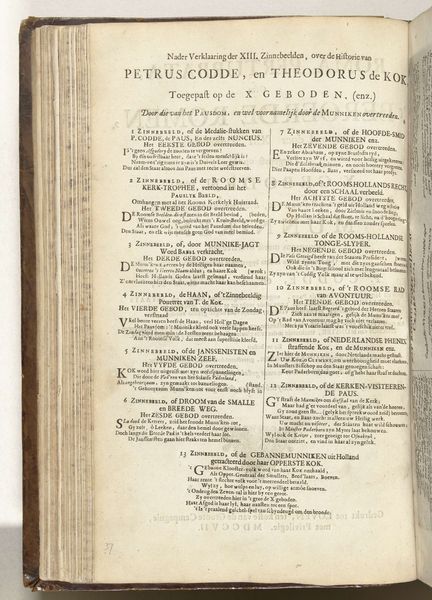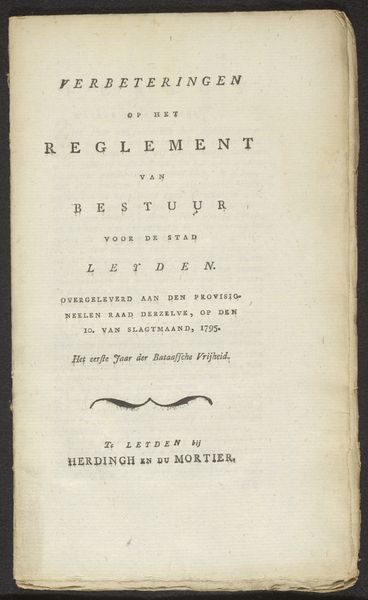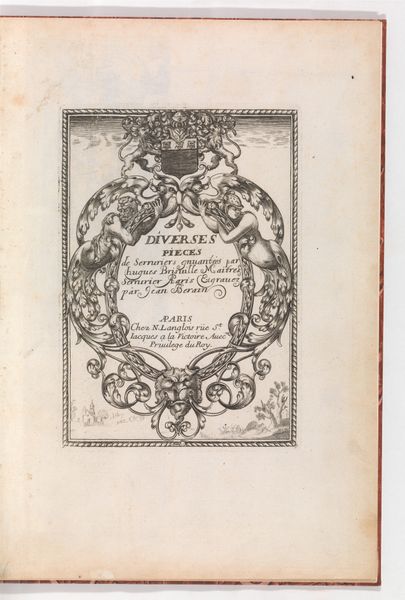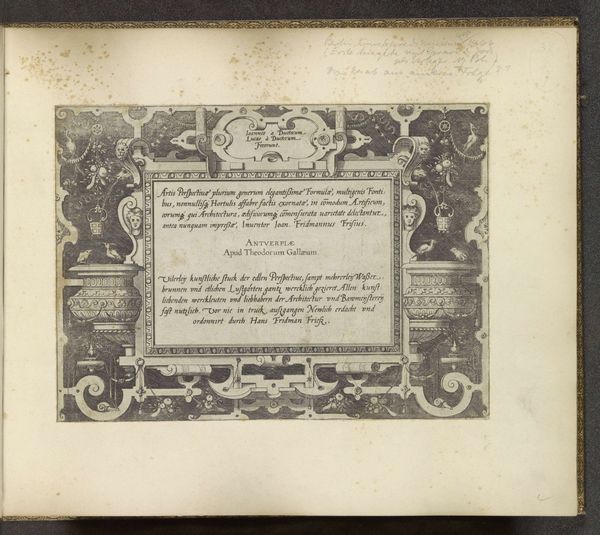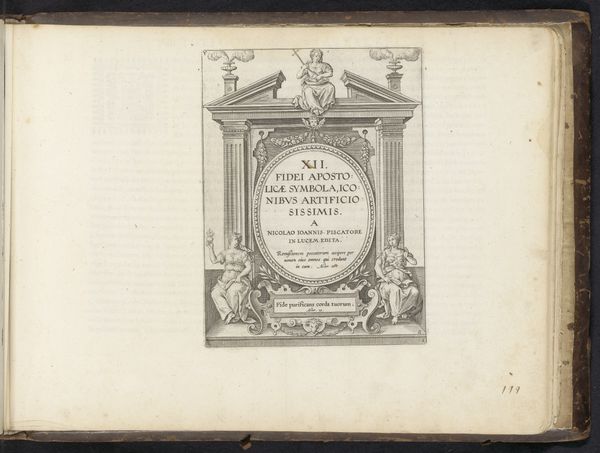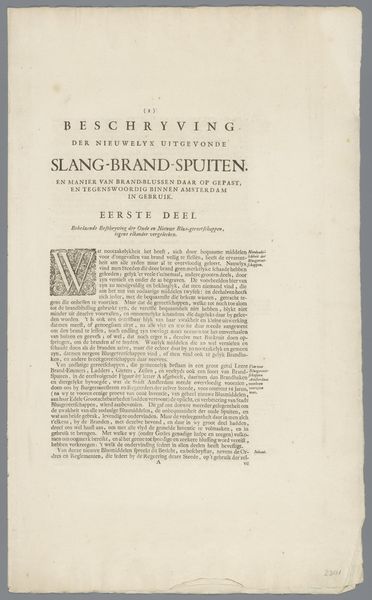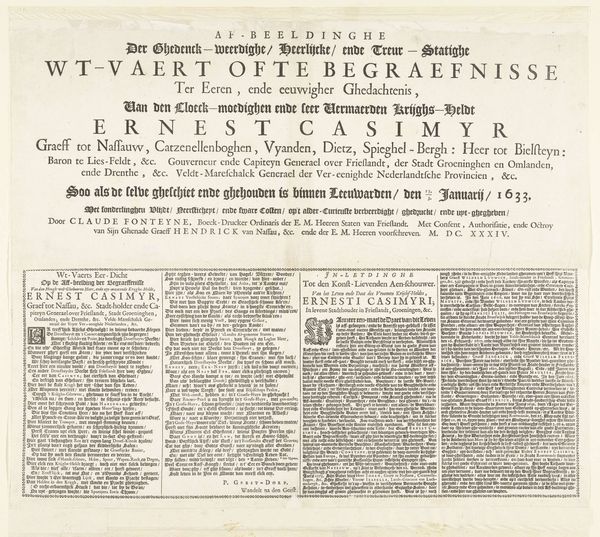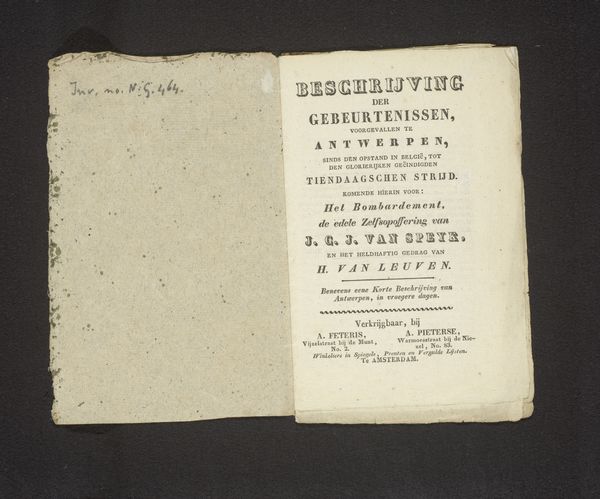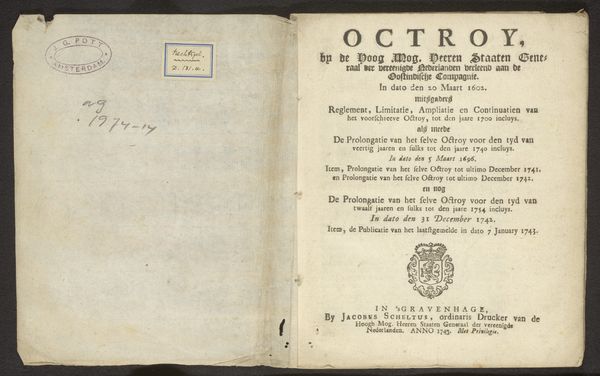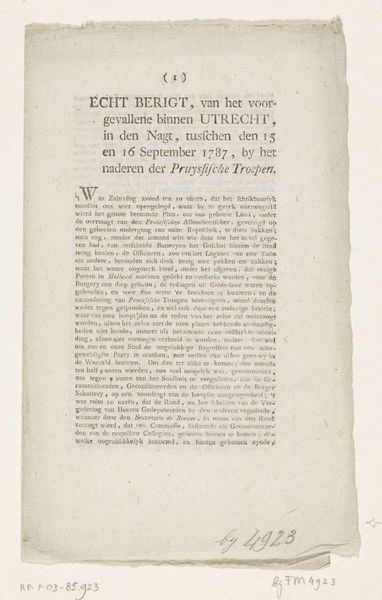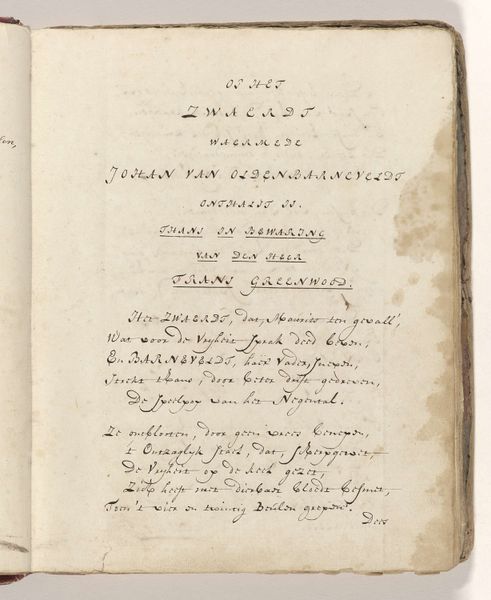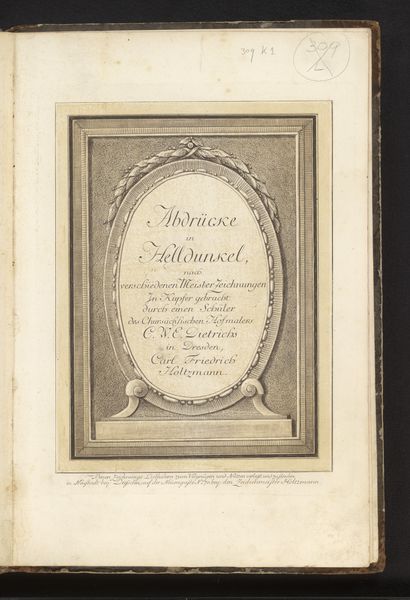
Omslag van vierentwintig prenten behorende tot het heldendicht 'Willem de Eerste' 1785
0:00
0:00
Dimensions: height 306 mm, width 506 mm
Copyright: Rijks Museum: Open Domain
Curator: Editor: This is the title page for 'Omslag van vierentwintig prenten behorende tot het heldendicht "Willem de Eerste,"' created in 1785 by Johannes Smit & Zoon. It’s a print with typography, held at the Rijksmuseum. It feels… very direct, almost utilitarian. I’m curious, what catches your eye when you look at this? Curator: Well, immediately I consider the material. Paper, obviously. But the texture, the watermarks (if any), the specific weight and preparation of that paper speak volumes. How was it sourced? What social structures allowed for this level of production of typography and printing and what level of distribution did this permit? Was it local or further reaching? Editor: I never thought about the paper that way! That's a great point about sourcing and distribution. It looks mass produced but I suppose I am just making an assumption there. The artwork makes me question if this was truly “art” or simply another form of manufacturing. Curator: Precisely! Look at the typography. It's not just about conveying the text, but about crafting a visual hierarchy, about efficiently delivering a political and artistic concept. Who set the type? What were their working conditions? Was this artisanal labor or something approaching factory work, even back then? It also presents an interesting conundrum – can something mass-produced carry an artist’s signature? How does this piece play into ideas around craft versus art? Editor: So, you're saying that focusing on the process, the materials, and the socio-economic conditions surrounding its creation gives us a deeper understanding of the work than just its face value as a historical document? Curator: Exactly! It challenges the traditional idea of the artist as a solitary genius. The means of production are inherently linked to the message and its cultural impact. We aren’t just admiring the final product but considering labor, materiality, and distribution that informed its very existence. Editor: Wow, I will look at art, especially prints, completely differently going forward. Thanks so much for enlightening me! Curator: My pleasure. Looking at art through a materialist lens really enriches the experience and encourages a more critical and socially conscious perspective.
Comments
No comments
Be the first to comment and join the conversation on the ultimate creative platform.
